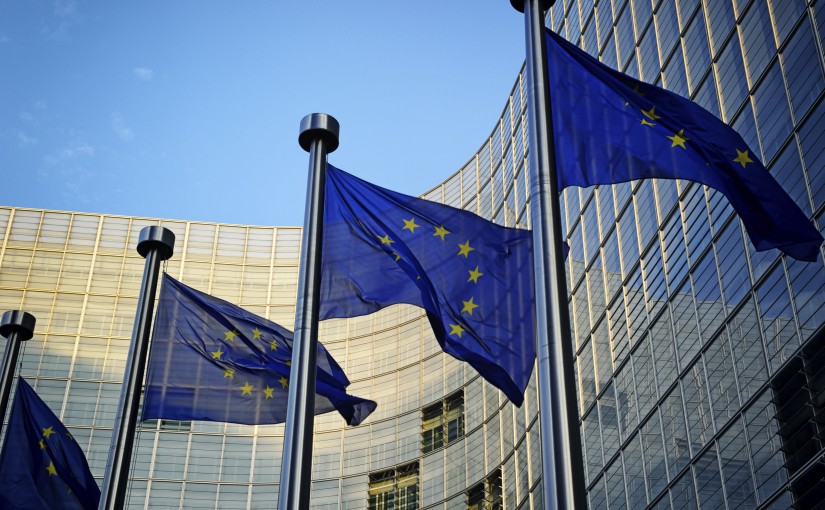If there’s one book you’ll find on most politicians’ bookshelves it’s Drew Westen’s The Political Brain. This 2007 work said that facts and logical arguments are not enough in political communication. Even those who are hyper-logical make emotion-based decisions. And if politicians or campaigns speak to feelings, they are more likely to succeed. Think back to Gordon Brown’s often statistic-laden statements and contrast with Tony Blair’s emotional, but often fact-free passages. It’s clear which cut through to the audience.
With this in mind I have looked at communications by both sides in the debate around Europe. Should we stay or should we go? This is an area of contested fact and we’ve already seen a blizzard of arguments. But as the referendum date (23 June) is now known, it’s useful to see how both sides’ comms are shaping up.
There is more than one group on each side. The Electoral Commission will make two of these “official” shortly. But we don’t need to look at every single campaign group to get a sense of what strategies are being pursued
Britain Stronger in Europe looks set to be the official Remain group. BSE (slightly unfortunate choice of initials) has already attracted an impressive list of supporters. Field operations (that’s handing out leaflets and knocking on doors to you and me) have started. But the front window currently is the website. So what sense of communication and messaging does this give us?
The first thing that sprung to mind when I looked at www.strongerin.org was British Airways! It feels very corporate (unlike my sense of what an active campaign normally looks like). The slogan, that Britain will be Stronger, Safer and Better Off, if we stay in Europe, is prominent and repeated. Front page material included (on Sunday 21st Feb) two “self-interest” type messages and two attacks on, or challenges to, the opposing camp. A sign-up form for potential supporters is given much space.
Some key components of active campaigning are missing here. As of 12 noon on Sunday 21st, the website was reporting that the organisation hoped “to see the completion of the Prime Minister’s renegotiation package shortly”. Now I know that this is from a press release issued a few days earlier but given that David Cameron’s announcement came on the Friday night, the lack of a speedy update or editing job should concern campaign managers.
The attack material consists of a challenge to the other side to spell out the likely outcomes if Britain withdraws from the EU and an “aha we got you” type release reporting statements by prominent Brexit supporters. This second piece focuses on whether Britain would be able to take part in the single market post-withdrawal. It’s not a bad subject. In fact it’s a very good and key subject. But here it’s presented in an overly technical way in which the main message is somewhat lost. (I was itching to rewrite this!)
As a reader, I didn’t feel emotionally engaged by the messages on this site. It felt very safe, almost uncommitted in parts. Someone already supporting the Remain message would find helpful material, but a neutral reader would, I suspect, stay neutral.
On the Brexit side we have Vote Leave and this campaign was quicker to react to the Cameron announcement. In fact its press release is timed 10.01 pm on 20 Feb which is a whole minute or so after David Cameron’s announcement started! Leave also had the Michael Gove announcement lined up so was able to post a lot more news more quickly over the weekend. (Surprisingly, the Boris Johnson announcement does not appear on the Leave front page or news section as of 22 February. This may be because he has yet to formally contact the campaign, or because of agreements with the Daily Telegraph, for whom Boris writes a column).
The first thing anyone visiting the Leave website sees is a sum of money, increasing roughly once a second, which is described as the UK’s total contributions to the EU. We don’t know the start point for this sum, but that niggle aside it is a very clear piece of communication. And is of course to be expected from a campaign run by a former head of the Tax Payers Alliance.
It’s not just money though. Frankly a message that is only about money won’t cut through to emotions. A short video about British ”heroes” is clearly designed to reinforce pride in a distinct, shared identity. Winston Churchill’s appearance was 100 percent expected, but we also see Emmeline Pankhurst and Alan Turing among the personalities featured. It’s tempting to argue about inclusions or exclusions from material like this, but the existence of this video is significant for the messages this campaign clearly wants to communicate.
Website names, the actual words that will appear on a url, can be key evidence of the core of a campaign’s message. Vote Leave’s name is not Vote Leave (which after all is about rejecting something) but Voteleavetakecontrol (a much stronger piece of messaging). How many of us, given the chance to take control rather than be told what to do, would turn that down?
Vote Leave’s website, like Stronger In, doesn’t feel like an active campaigning website yet either. Both however are e mailing supporters and asking for activity on social media.
I’ll be looking at the communications by both sides over the next few weeks. I’m interested in how the tone and content changes. And I’ll be using Benoit’s Functional Theory of Political Communication to do some analysis.
June 23rd will be a key date for our country. I hope the communications will help us all become engaged in the decision and cast our vote in an informed and committed way.
This post was originally published on the CIPR’s Influence website.

